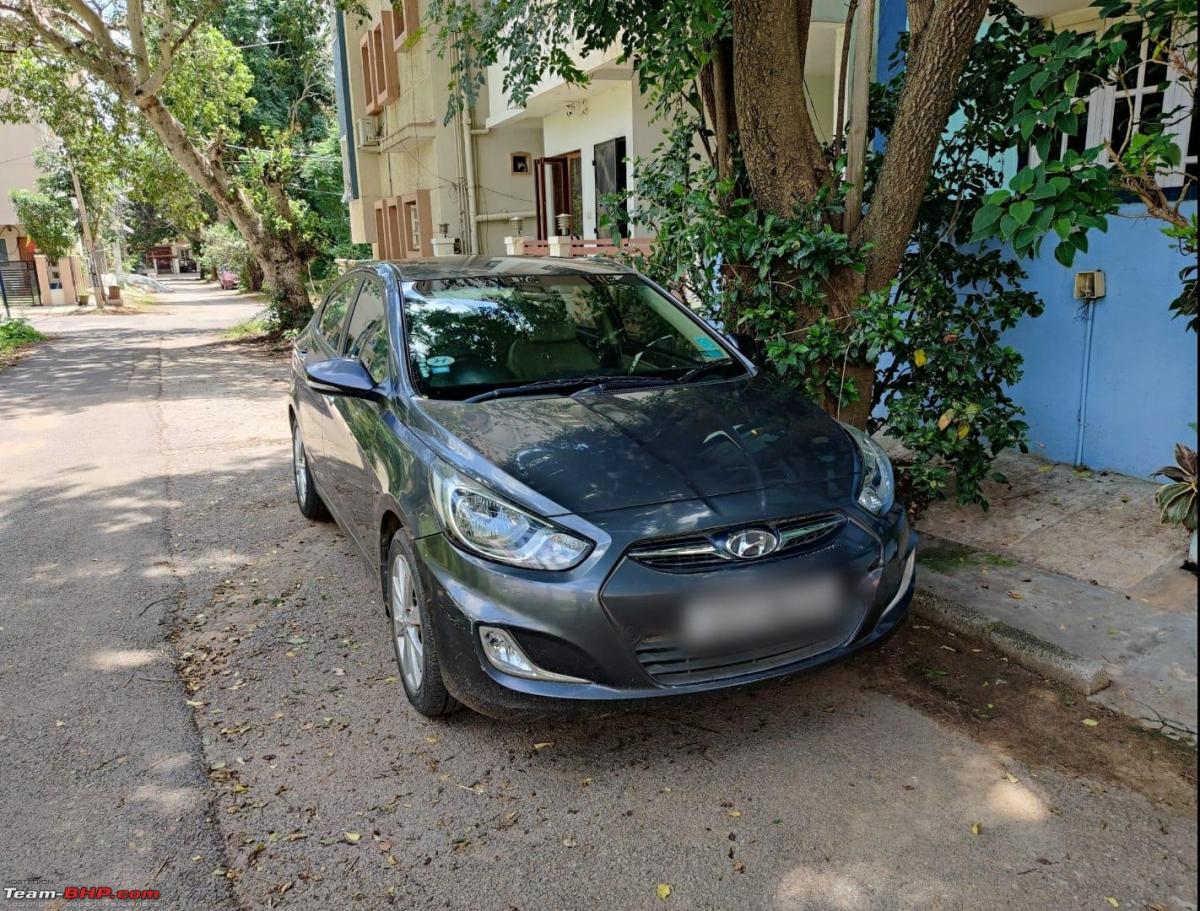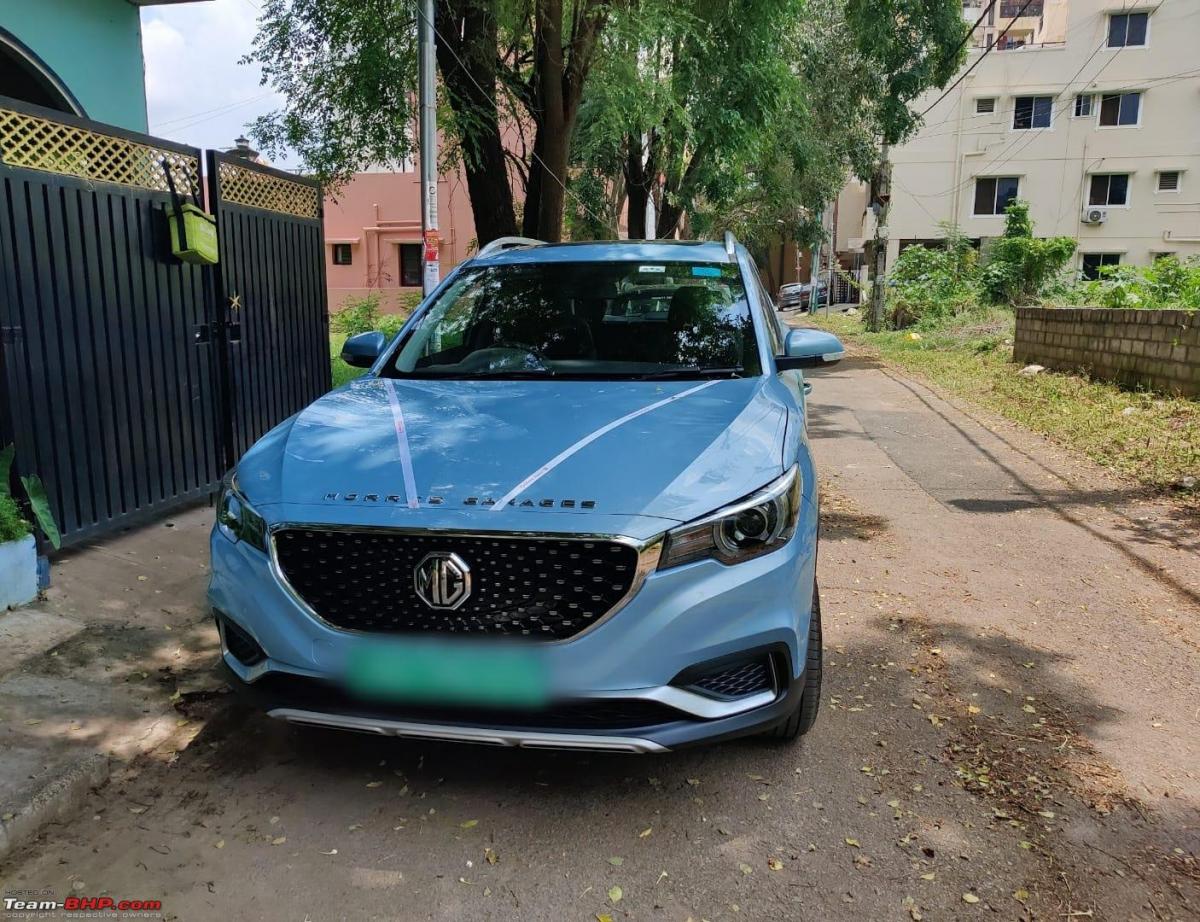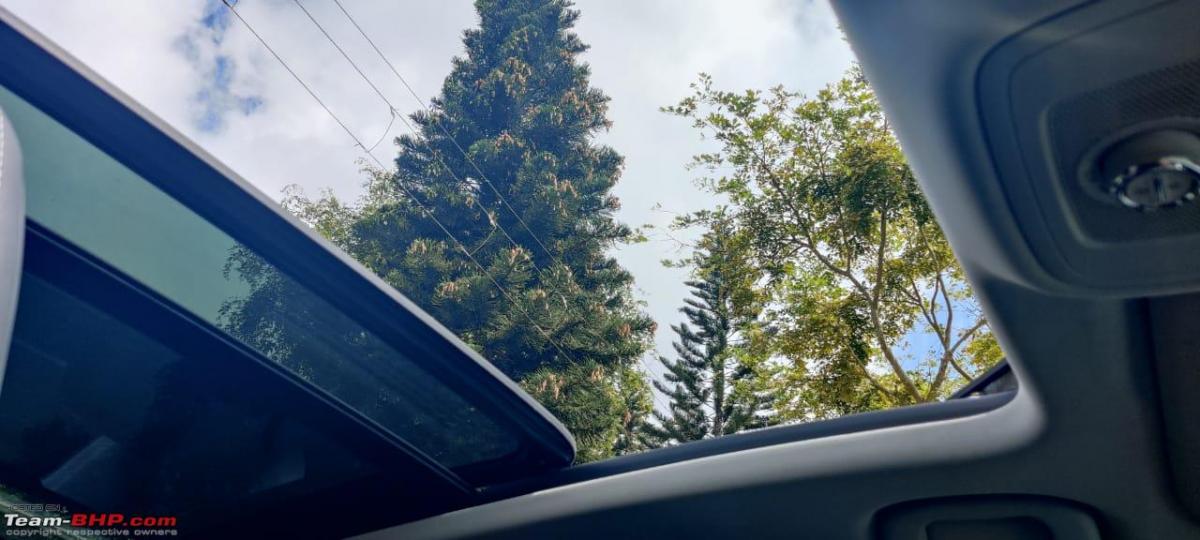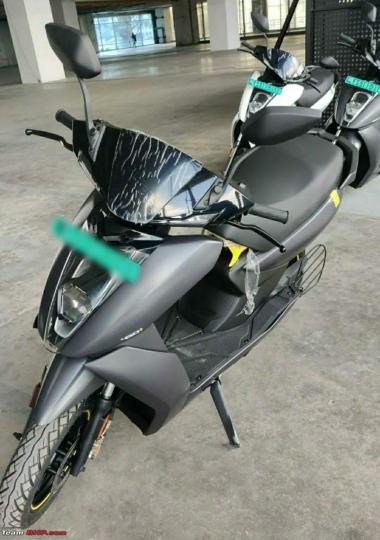News
My transition to EVs: Bought an MG ZS EV & an Ather 450 Plus
We decided to make the transition as the service costs of our Hyundai Verna & Renault Kwid skyrocketed. Another factor was the rising fuel prices.
BHPian WhiskeyTangoFox recently shared this with other enthusiasts.
So EVs are pretty obviously the future, but understandably, there is some apprehension about shifting to them primarily due to their high initial down payment and also the ever-present 'range anxiety. So here I am to share my experience with you of my personal vehicles, and hopefully, I'll address most of your conundrums. Firstly, a little background about the previous vehicles my family (My parents and I) have had. We started off with a humble WagonR Lxi in 2006, and it served us well for a good 10 years before we bid it adieu.

Our WagonR and yes, that's me.
In the meantime, in about 2013 or so, we also bought a Hyundai Verna SX(O) Petrol AT, which was our primary car. My parents work in the same institution, so they used to commute together and only occasionally used both cars on the same day. This helped us keep fuel costs relatively low. Plus, this was when petrol prices never crossed the Rs 60/ Litre mark. Anyway, once we sold the WagonR, we were looking at a small city hatchback with high fuel efficiency, as this was when the infamous "Bangalore Traffic" started to show its face for the first time. We finally settled on the Renault Kwid RTX (O) AMT because of its high promised fuel efficiency of about 24 kmpl. However, during the five odd years that it was with us, it returned only 14 kmpl in the city and around 18 kmpl on the highway. The Verna returned only 9 kmpl in the city and around 14 kmpl on the highway. This wasn't excellent fuel economy but was manageable as petrol prices, which had, although gone up, were still around the 75-80 Rs/ Litre range. This all changed when two significant incidents took place:

The Verna

The Kwid
- The petrol prices slowly crept up to almost 112 Rs/ Litre in Bangalore (It reached 118 Rs at one point!)
- The service cost for both the Verna as well as the Kwid skyrocketed at the company-owned service centres.
The Contenders and the Decision
This was when my family decided to replace the Verna with an electric car. This was in mid-2021, and the three options available were the Tata Nexon EV, the MG ZS EV, and the Hyundai Kona. We ruled out the Hyundai Kona as it hadn't been updated for the current model year and due to its high promises in terms of range and non-deliverance of anything remotely close to that. We initially did consider the Nexon EV, but considering that this was going to replace our Verna, which we also used for occasional long-distance journeys, primarily to Chennai, Coimbatore and Madurai (where some of my other family members reside), or to nearby hill stations, we needed a car that was safe, had a relatively good driving range, good service network, fairly spacious interiors and also some modern tech like android auto.
We took a test drive of the MG ZS EV and immediately loved the gorgeous interiors with that beautiful sunroof. When I drove it, I knew it was the right car. The performance was excellent, as was the ride quality. It simply wafted over potholes and did so with style. The proportions were good, and it looked composed and elegant. There were ample safety features too, with ABS, EBD, ESP, 6 Airbags, Hill Hold, Hill Start Assist, Adaptive Reverse camera, All four Disc Brakes etc. The SA was also prompt, and the dealership (Electronic City) answered all our queries and even brought the car to our house a few days later to see if we could fit the vehicle in our portico. We booked the car about a month later, and the SA said that there was a blue MG ZS EV ready and it would take about 2 weeks for all the registration formalities to get over, whereas the other colours would take 45 days to be delivered. We agreed on the blue vehicle, and the total on-road price at the time was about 26.5 lakhs. About a week and a half later, we got a call saying that the car was ready for delivery, we did our PDI right before the delivery and found no issues, and we happily took it home.




It's been about 5 months, and we've driven just about 3000 kms and here are my observations so far.
City Range
The Claimed Range is 419 Kms, but in reality, you can expect 350-360 Kms in the city with the AC used only when required and normal driving (No extremely harsh acceleration and braking).
Long Distance
We have made one long-distance trip on the highway to Yercaud, and I drove it like a regular car with speeds ranging between 80 kmph to 140 kmph and the car was absolutely planted which negligible body roll. There are a fair amount of chargers towards Tamilnadu, so we had no issues. To be on the safe side, we did charge in between at Krishnagiri and Salem since this was our first long-distance trip, but we soon discovered we could've made the entire trip from Bangalore to Yercaud with one charge.
There is one Zeon Fast Charger at Krishnagiri (50 kW), One Tata Power Charger at Salem (25 kW) and one Zeon Charger at Yercaud, inside the GRT Hotels (22Kw AC). The average efficiency while driving on the highway to Salem ranges between 7 - 8.3 kms/kWh (trip computer indicated), which equals 311.5 to 369 kms of driving range (on relatively plain highways with gradual inclines and declines). While driving from Salem to Yercaud, full of steep hairpin bends, the car returned an abysmal 3.1 km/kWh, which is understandable as a lot more power is used while climbing uphill. However, it more than compensated for this as while coming back downhill from Yercaud to Salem, it charged up the battery from 90% to 96% using level 3 regen alone! (trip computer indicated around 32 km/kWh).
The car can easily do 300-320 kms on a full charge on the highways on Eco Mode (I kept regen at level 3, occasionally shifting to level 2. While in Yercaud, we also took a tour of the Cauvery Peak Coffee Estate, wherein we took the MG into the estate, and boy did it not stutter even once. There is ample ground clearance, and even steep 30 degree inclines on surfaces with loose gravel isn't an issue. The number of chargers on the highways will only grow, so don't worry about it. If your commute is primarily in the city and occasionally on the highway, the ZS is an excellent car.
Charging and Maintenance
Coming to the charging and maintenance costs, the MG costs about 1 Rs per Kilometre to run in the city, which works out to about 500 Rs a month for our usage. It was a little higher on the highway, where it was about 1.5 Rs per Km. In comparison, the Verna and Kwid (which we used alternately) cost us about 6000-8000 Rs a month for fuel. We use only the 15 amp charger to charge up the car once a week, and we don't typically charge it beyond 80% unless needed. The battery is rated for around 1.5 lakh kilometres and comes with an 8-year warranty. The first five services are free for the MG, after which the service cost is only about 3500 Rs a year (The SA told us that in comparison, the Hector costs around 14000 a year for service.) We have finished one service at the Electronic City branch and have had no issues.

Cons
There are a few cons; however, the infotainment system, although mostly excellent, is occasionally slightly laggy, and we would've liked more interior and exterior colour options. It also would've been nice if they used more soft-touch materials on the inside, like the Astor.
Getting an Ather
More recently, we decided to sell the Kwid as it started to give us some issues, and after shelling out almost 30,000 Rs to fix it, we bid it adieu. I wanted a personal vehicle for myself as my parents use the car primarily, and I knew that a two-wheeler was better in the city due to traffic and the lack of parking in public places. I also wanted it to be electric because of the low running costs and the fantastic performance. The requirements were good build quality, at least a decent service network, good looks, good performance, some nice features, maybe?
I immediately ruled out the smaller brands as they didn't have a good service network and the build quality and their performance were inadequate. The major contenders were the Ather twins, Ola S1 Pro, Revolt RV 400 and Simple One. Revolt being priced a little too high and the poor reviews on its reliability made me remove it from my list. As there was no proper information on the launch of the Simple One, I chucked that too. I wasn't impressed by the gimmicky features on the Ola, such as the Speakers and the Cruise Control and after seeing the initial impressions of auto journalists about the sub-par build quality, buggy software, lack of features, heating and throttle calibration issues, it was a big No-No for me. Finally, my parents and I went to Ather Indiranagar to check out the Ather twins. The SA was very enthusiastic and patient and answered all our queries.
The on-road prices, including the FAME II Subsidy at the time, were 1.29 Lakhs for the Ather 450 Plus and 1.49 Lakhs for the Ather 450X. I chose the former as I didn't feel that the features that the 450X had, such as Bluetooth and the extra 15 kms of range, mattered to me. My daily commute wouldn't exceed 40 kms (normally around 20kms), so the 450 Plus was just fine. We made the full payment, but it took a whole month for the scooter to be delivered due to the chip shortage. However, props to the Ather team. They did everything they could to make it happen as soon as possible and constantly kept me updated. A friend of mine has the Ather 450, and it has been a smooth experience for him so far, so I hope it's the same for me. Anyway, I took delivery of the Ather just a few days ago (7th January 2022) after its PDI, and the performance is just excellent. The build quality is good, and I have had no issues as of now. The battery is rated for 50,000 kms and comes with a 3-year warranty. The boot space is more than adequate and fits my full-sized helmet as well.

Charging Cost
So I am yet to charge the vehicle, but since it's a 2.9 kWh battery, and at Rs 7 a kWh, it should cost just around 20 Rs for a full charge that gives 70 Kms. That's cheaper than the BMTC Buses!
The Initial Cost of Electric Vehicles
The initial cost of EVs is definitely higher than their ICE equivalents, and I totally understand this. However, this definitely will reduce as time progresses. However, one must understand that it is not too far off. For example, with regard to the MG ZS EV, a comparable vehicle would be the Hyundai Creta. Its fully-loaded car (quite similarly specced with a few additional features, Diesel AT) costs around 23.5 Lakhs. The MG is just 3 Lakhs off and offers a much lower running cost. With time, the more you drive it, you will break even with the ICE car in terms of price, and the ICE car will soon surpass the EV in terms of expenses. With regard to the Ather, an equivalent scooter, like the TVS Ntorq, can cost up to a lakh and has much higher running costs again.
Check out BHPian comments for more insights and information.


























